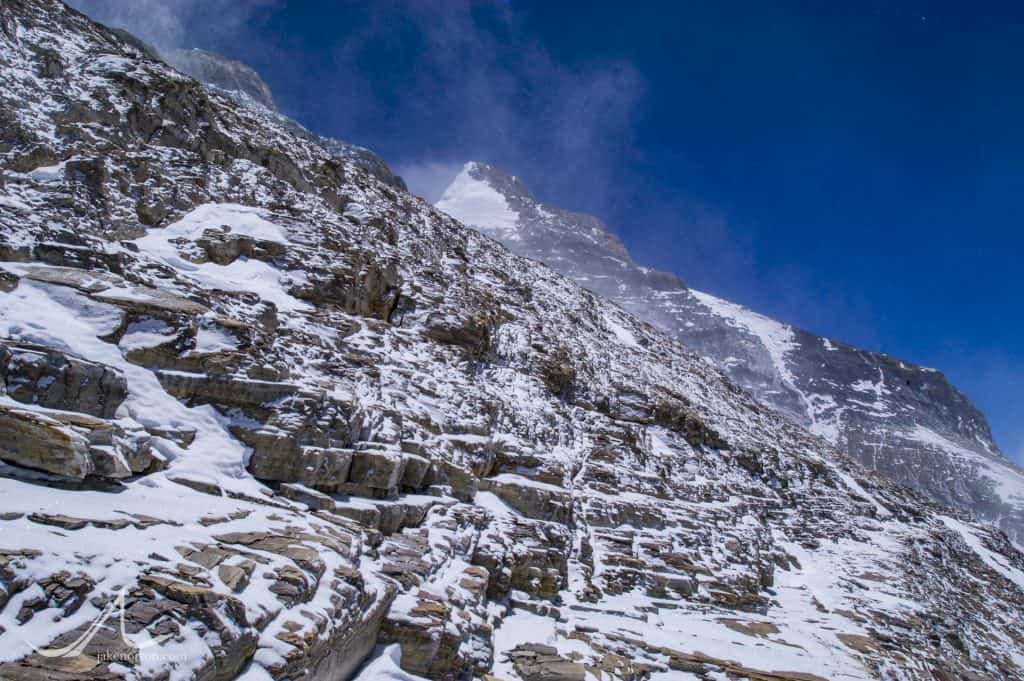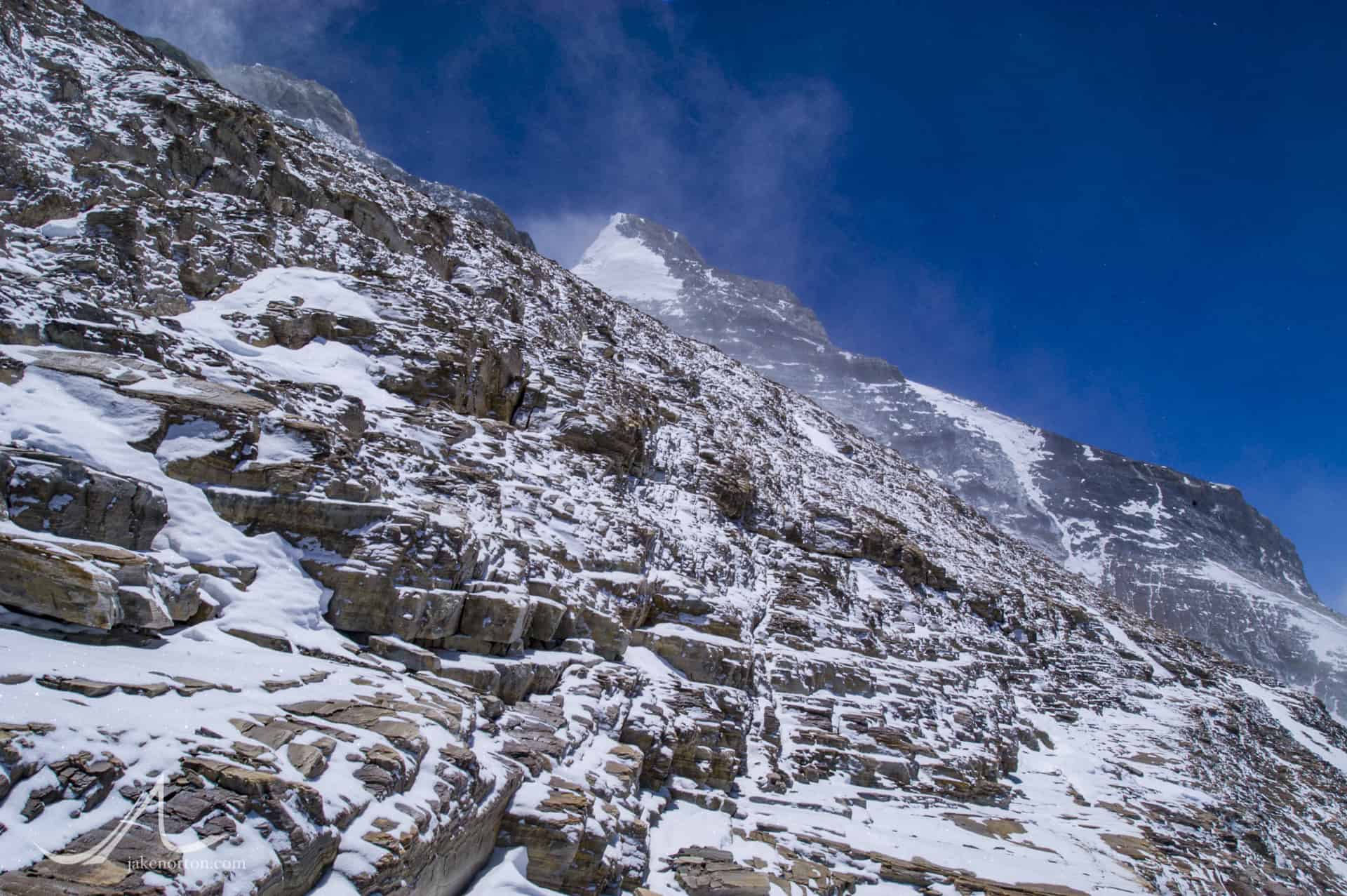Each year I present the story of Mallory & Irvine to many audiences around the country. It is one of my favorite presentations to share, for I feel the story of Mallory, Irvine, and the pioneer climbers of the early Everest attempts (1921-1938) is an enthralling one which touches everyone's heart and imagination.
Often people ask me what the terrain is like on the upper mountain. My presentation, of course, features my photography from my four expeditions to the North Side of Everest. While still images have great power and convey a sense of place and drama, sometimes video images tell a different side of the story.
It was with this in mind - sharing more of the high Everest experience - that I posted a video on the search for Irvine in 2004 and my subsequent "discovery" of a mystery camp at the base of the First Step on the Northeast Ridge.

To give people more of a feel for the terrain we searched in 2004 and the overall look and feel of life above 27,000 feet on Everest's North Side, I put together another video. This footage was shot by my friend and climbing/searching companion on the 2004 Mallory & Irvine Research Expedition, Dave Hahn. (If you don't know Dave, he is an amazing guy - 9 summits of Everest [yup, NINE!] and countless other peaks around the world. Read his astounding resume here.)
Anyway, the video takes you through one of our search days in 2004, from the start up in the climbers' gullies at the base of the Yellow Band to the traverse from the 1933 Camp VI and off the beaten track, onto the Norton Traverse from 1924, and finally back down via the Longland Traverse. Fun stuff!
Enjoy!



This is most interesting footage. It reminds me of a few quarries I've been in here in Tassie.
I'm struck by the angle of the terrain on the 'Norton' route (heh heh) and the Longland descent traverse.
The colour of the rock is noticeable too, a tan hue, which is rather surprising.
It won't be easy finding 1924 oxygen cylinders (rusted) in this environment, however there are a few places where they are likely to be and thus worthy of a dedicated area search based on calculated usage rates of individual cylinders as you'll soon see....
Most revealing footage indeed. thank you.
Phil
Hi Phil,
Thanks for your note, and good to hear from you! Yup - the rock up there definitely hides bottles well - especially '24 bottles! - and also natural fiber clothing. Makes searches tough, but it wouldn't be any fun if it were easy!
Hope all's well in Tassie!
Best,
Jake
Many thanks for your insights today Jake vis a vis colour 'blending' of old objects.
I'd imagine snow goggles also being a bother in this regard too as most are tinted and thus drown out colour.
I'm nearing the end of an 'epic' multi part paper I've written on this sort of thing, that looks at oxygen cylinders, numbers taken up by M&I, usage combinations and current locations based on some new calculations I've done (simple stuff). All great fun!.
In light of that the sort of terrain and the sheer area in question of which to search, I'm increasingly of the mind that only specific searches in key locations based on calculated usage and positioning of M&I spent cylinders is the best way to
find more clues.
In short a sound theoretical
basis beforehand leading to dedicated searches in predicted areas where even a negative result tells us something new.
My new work in this area delves deeply into this matter and I've made some interesting new discoveries that may better refine just what M&I did up there in greater detail.
The results have opened up intriguing new prospects for me,which I'll be publishing the at the appropriate juncture.
Let me know if your interested.
Many thanks for your footage up there and interest in my papers.
I'm well indeed and enjoying the welcome rain in Tassie today. Good wet weekend for watching Dr who!.
Hope you're well,
Phil
In lots of my reading, podcast listening etc. there is people mentioning that Mallory's body was in such good condition because he either fell from lower down the mountain or was able to hang on to, and use his ice axe as a means to slow his out of control fall. Is there any evidence against the fact the Irvine could have been in the exact same position but without his ice axe as a means to slow himself down and just tumbled off the mountain? This is kind of alluded to as a possible scenario at the end of the more recent Discovery show but I just want to make sure I am not missing anything.
Also, let's say the above is true. Would you say that Mallory being able to retain his ice axe through a fall or incident can be attributed to his experience? In other words, his climbing instincts and reaction to the situation is why he was findable and Irvine is not
Hi Matt,
Thanks for your note and comment. I think you're on the right track with all of this for sure. It seems to me Mallory must have fallen not from the ridgecrest, as he would've been in far worse condition judging by the other remains I've seen who did fall from the crest. And, it is definitely possible that Irvine could have dropped his ax in a fall while Mallory, being more experienced, retained his. The challenge, though, seems to be twofold: First, Irvine's ice ax was of course found in '33 near the crest, and second, there were the two supposed sightings of a body - 1960 by Xu Jing and 1995 by Chhiring Dorje - and both seemingly in the Yellow Band not too far from the Ridge. So, it's all difficult to decipher, indeed.
Hopefully one day we'll know some more about it all!
Thanks again, and all my best,
Jake